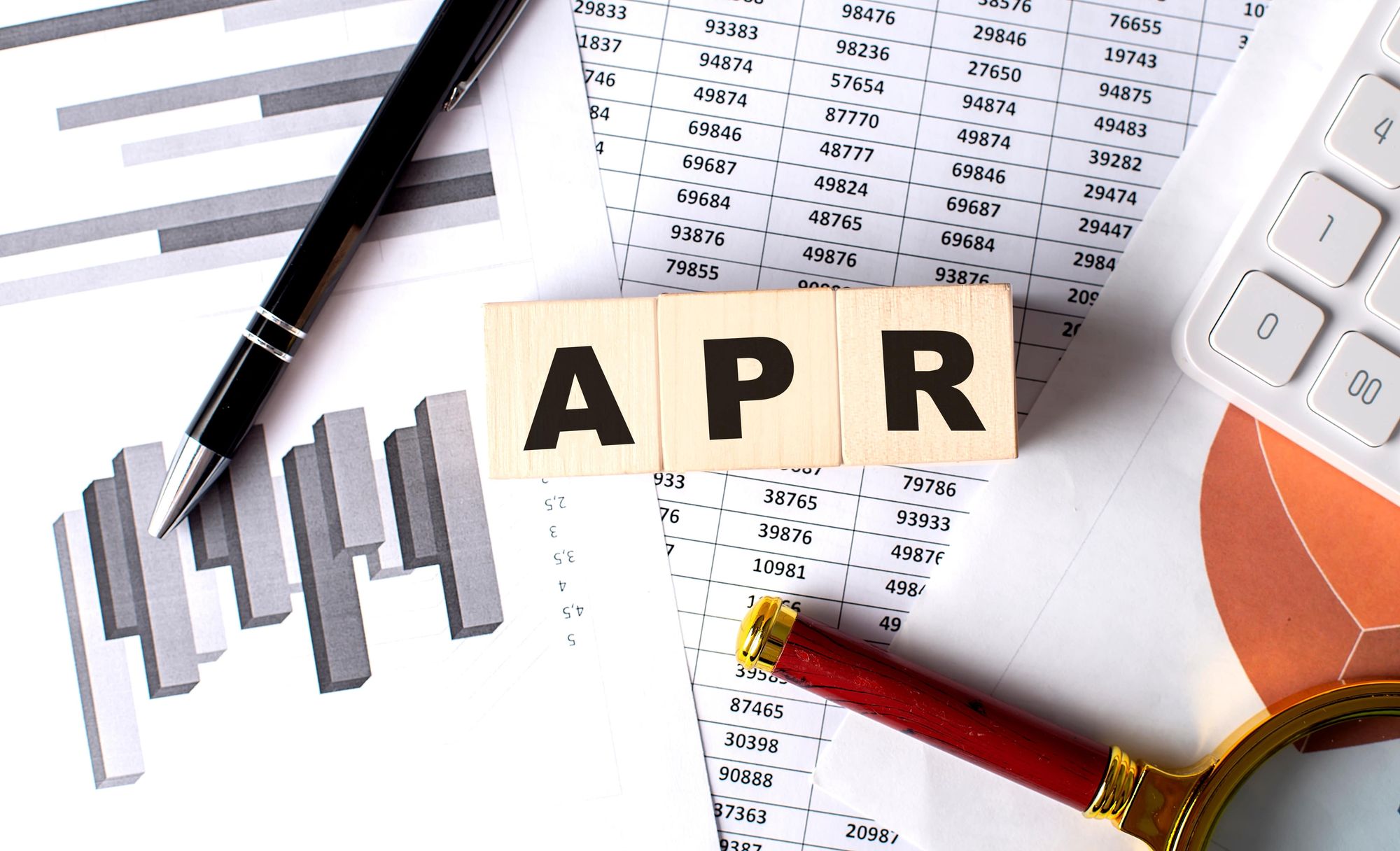Are you of Indian origin and living abroad? You've probably come across terms like PIO and OCI. These cards offer different benefits, but it can
In the world of personal finance, borrowing money is a common practice. Whether for buying a car, funding a wedding, consolidating debt, or pursuing higher education, loans provide the financial flexibility to achieve various goals.
However, with borrowing comes the responsibility of understanding its costs. This is where the concept of Annual Percentage Rate (APR) steps in.
In this comprehensive article, we will delve into the depths of APR, exploring its significance, calculation, factors influencing it, and its distinction from interest rates.
Our focus will be on personal loans, providing you with a solid understanding of how APR affects your financial decisions.
What is the Annual Percentage Rate on Personal Loans?
APR, or Annual Percentage Rate, serves as a financial compass for borrowers. It is a standardised metric designed to represent the true cost of borrowing over a one-year period. While it incorporates the interest rate, it goes beyond accounting for additional fees associated with the loan, such as origination charges and processing fees.
These fees, often overlooked, can significantly contribute to the overall cost of borrowing. Therefore, APR acts as a comprehensive indicator, painting a clearer picture of the total financial commitment involved in taking out a loan.
The Role of APR in Personal Loans
When considering a personal loan, the APR becomes crucial in the decision-making process. Unlike a mere interest rate, which outlines the cost of borrowing the principal amount, the APR provides a holistic view of the entire borrowing arrangement. Let's explore some key facets of APR in the context of personal loans:
-
Inclusive of All Costs
Personal loans often come with an array of associated costs beyond the interest. These might involve loan origination fees, application charges, and administrative costs. APR encapsulates all these expenses, ensuring that borrowers are well-informed about the complete financial commitment they are entering into.
-
Facilitating Effective Comparison
APR simplifies the comparison of different loan offers from various lenders. It serves as a universal metric for evaluating the cost-effectiveness of loans, enabling borrowers to make informed decisions and choose the offer that best aligns with their financial goals.
-
Transparency and Regulation
The financial industry is rife with complex terms and hidden charges. APR, however, introduces transparency into lending practices. Lenders are mandated to disclose the APR to borrowers, enabling consumers to make decisions based on accurate and comparable information.
-
Strategic Financial Planning
APR empowers borrowers to plan their finances more effectively. By understanding the total cost of borrowing, borrowers can budget more accurately and ensure that the loan payments fit comfortably within their financial means.
-
Impact on Monthly Payments
The APR also influences the monthly payments borrowers must make. A higher APR leads to higher monthly payments, potentially impacting the borrower's ability to manage their cash flow.
What Does Annual Percentage Rate Mean on a Personal Loan?
The formula for calculating APR on personal loans might seem intimidating, but it's essentially a mathematical representation of how all the variables – loan amount, interest rate, fees, and loan term – interact over time. The formula is as follows:
APR = [(Total Interest + Total Fees) / Loan Amount] x (365 / Loan Term in Days) x 100
Breaking it down, this formula considers the total interest paid, total fees incurred, loan amount, and the loan term. The resulting value is then annualised for ease of comparison.
Factors Influencing APR on Personal Loans
The Annual Percentage Rate (APR) on personal loans is not set in stone; it varies based on a range of influential factors. Each of these factors plays a pivotal role in determining the final APR offered by lenders.
By understanding these factors, borrowers can gain insights into the nuances of lending decisions and potentially take steps to secure a more favourable APR.
-
Credit Score
Your credit score is a powerful indicator of your creditworthiness. Lenders use it to assess the risk of lending to you. Generally, borrowers with higher credit scores are perceived as less risky, leading to lower APRs. A strong credit score reflects a history of responsible financial behaviour, prompting lenders to offer lower interest rates and fees.
-
Loan Amount and Term
The amount you borrow and the loan term's duration impact the APR. While larger loan amounts may result in higher APRs due to increased risk for lenders, longer loan terms provide more opportunities for interest and fees to accumulate. Shorter terms might lead to lower APRs but potentially higher monthly payments.
-
Lender's Policies
Different lenders have different policies and structures for fees. Some lenders might charge higher origination fees or other associated costs, leading to a higher APR. It's essential to shop around and compare offers from various lenders to identify those that align with your financial goals.
-
Income and Employment
Lenders often assess your income and employment stability. Borrowers with higher income levels and stable employment histories might be offered lower APRs. This is because a steady income stream implies a greater ability to repay the loan.
-
Debt-to-Income Ratio
This ratio compares your monthly debt payments to your monthly income. A lower debt-to-income ratio indicates better financial health and might result in a lower APR. Lenders consider this ratio to gauge your capacity to handle additional debt responsibly.
-
Economic Conditions
Broader economic factors, such as prevailing interest rates and inflation, can impact the APR offered by lenders. During periods of high-interest rates, borrowers might encounter higher APRs.
-
Loan Purpose
Some lenders offer specialised APRs for specific loan purposes, such as education or home improvement. These rates can vary from the standard APR and might be influenced by the perceived risk associated with the loan's purpose.
-
Negotiation Skills
While not a direct factor, your negotiating ability with lenders can influence the APR offered. Being well-informed about your financial situation, comparing offers, and communicating effectively with lenders can potentially result in better terms.
With an understanding of the factors influencing APR, let us now analyse how it differs from interest rates.
APR vs. Interest Rate: Unravelling the Distinction
While APR and interest rates are closely related, they serve distinct purposes. The interest rate represents the percentage of the loan amount the lender charges as a cost for borrowing the funds.
In contrast, APR encompasses not only the interest rate but also various fees associated with the loan. Essentially, while the interest rate outlines the cost of borrowing the principal amount, the APR provides a more holistic view of the true cost of the loan.
📗 Related reading- The Basics of Interest on Loans
Conclusion
As you navigate the realm of personal loans, a solid grasp of the Annual Percentage Rate (APR) is your guiding light. It serves as a tool for comparing loan offers, understanding the genuine cost of borrowing, and making well-informed financial decisions.
With its ability to factor in interest rates and associated fees, APR offers a transparent and comprehensive view of the overall cost of a loan over a year. This transparency empowers you to budget wisely, strategise your financial journey, and avoid unexpected financial jolts.
Remember, while APR is a valuable metric, it's just one piece of the borrowing puzzle. A thorough review of loan terms, a meticulous comparison of offers from different lenders, and a realistic evaluation of your financial capacity are equally vital steps.
With knowledge about APR and its implications, you're well-equipped to navigate the borrowing landscape confidently and make choices that align seamlessly with your financial aspirations. So, next time you consider a personal loan, let APR be your compass, guiding you towards a well-informed financial decision.
AUTHOR
KreditBee As a market leader in the Fintech industry, we strive to bring you the best information to help you manage finances better. These blogs aim to make complicated monetary matters a whole lot simpler.







